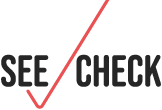Original article (in Serbian) was published on 4/12/2024; Author: Ivan Subotić
The Serbian Parliament adopted over 50 laws and agreements without debate, including the Law on Amendments and Supplements to the Gambling Law. It imposes additional obligations on gambling operators, and its introduction was preceded by media conflicts between betting shops and the now-former Minister of Internal and Foreign Trade, Tomislav Momirovic. In one of the articles criticizing the mentioned law, the betting shop Meridian claims that “the number of gambling addicts in Serbia is by far the smallest in Europe”. One of our readers questioned this claim, which turned out to be completely justified.
In the controversial article, Meridian also states that the number of gambling addicts in Serbia “according to data from our reference institutions, is 300 times smaller than what is highlighted in targeted and tendentious campaigns”. However, Meridian remained mysterious and did not disclose which “reference institutions” they were referring to, nor what they considered to be the real number of gambling addicts. Therefore, we attempted to contact them to obtain specific figures and the “reference” source. Unfortunately, we did not receive a response by the time of publishing this article.
Contrasting data on addicts
Thanks to similar articles by Meridian about gambling addiction and the number of addicts, we were easily able to obtain estimates and sources. Meridian and the Association of Gambling Operators (UPIS) have claimed multiple times in recent years that the number of gambling addicts in Serbia is just slightly over 1,000, specifically 1,030. This estimate can be found in several promotional articles, some of which clearly state that they were published by Meridian.
Opposed to this are organizations that deal with gambling addiction recovery, which are presenting a number that is 300 times higher, claiming there are as many as 300,000 gambling addicts in Serbia. We also sent them an email in an attempt to find out where they got this estimate, but we have yet to receive a response.
Specifically, we did not receive a reply from the SOS Center for Gambling Addiction Treatment and Rehabilitation, which, according to some media outlets, is the source of the information stating that there are 300,000 or even more gambling addicts in Serbia. We also did not receive a response from the Citizens’ Association for the Fight Against Pathological Gambling “Klub Sansa”. It’s worth noting that this figure of 300,000 gambling addicts in Serbia has been circulating in the media for at least 16 years.
Meridian’s misuse of Drajzerova’s data
Meridian’s claim that “the number of gambling addicts in Serbia is by far the smallest in Europe”, which is supported by the assumption that there are 1,030 gambling addicts in Serbia, is highly manipulative and far from truthful. Here’s why.
Meridian and the industry association UPIS insist on the figure of 1,030 gambling addicts in Serbia in their promotional texts. They cite a symposium titled “All Faces of Addiction in the Modern Era”, organized by the Special Hospital for Addiction Diseases (commonly known as Drajzerova), held at the end of last year. At that symposium, it was stated that Drajzerova had opened 1,030 records under the diagnosis of pathological gambling. However, this number cannot be presented as the total number of gambling addicts in Serbia. This was confirmed to us by the head of the Daily Hospital for Chemical and Non-Chemical Addictions at Drajzerova, Olivera Sbutega Filipovic:
“The Center for Non-Chemical Addictions at the Special Hospital for Addiction Diseases has been operating since 2010, and as of that date, 1,030 records have been opened under the diagnosis of pathological gambling, which was presented at the symposium last November. This number does not represent the total number of people with gambling addiction problems in Serbia. It is exclusively the number of those who sought treatment at our facility”.
Sbutega Filipovic also explains that the current number of records under the diagnosis of pathological gambling at their institution is 1,198 and that the data presented at last year’s symposium are specifically related to the Center for Non-Chemical Addictions at the Special Hospital for Addiction Diseases and do not refer to the total number of individuals with pathological gambling issues in Serbia. She also clarified that “the Special Hospital for Addiction Diseases is one of the relevant institutions dealing with behavioral addictions caused by gambling, but it is not the only one in Serbia”.
So, what is the actual number of gambling addicts in Serbia?
Unfortunately, we do not have an exact and up-to-date figure that answers this question. The document that provides the most recent and closest estimate of the number of gambling addicts in Serbia was published by the Institute for Public Health of Serbia “Dr. Milan Jovanovic Batut” in 2018. The research is titled “Lifestyle Survey of the Population of Serbia 2018”, and can be downloaded from the Batut website. The survey states the following:
“Overall, 3.9% of the adult population in Serbia meets the criteria for low, moderate, and high-risk gambling, and problematic and pathological gambling is found in 1.6% of respondents aged 18–64. It is estimated that pathological gambling affects between 44,000 and 97,000 people in this age group in Serbia”.
Thus, if we accept the data from UPIS about the European average of 1.5% of gambling addicts in the population, Serbia does not significantly differ from other countries in Europe but is slightly above average. When we compare Batut’s 2018 data with the European Gambling and Betting Association (EGBA) data from the same year, we see that there are at least a few European countries where the gambling addiction rate was lower. These countries include Belgium (0.9–1% of the population), Sweden (0.6% of the population), and England (0.5% of the population).



